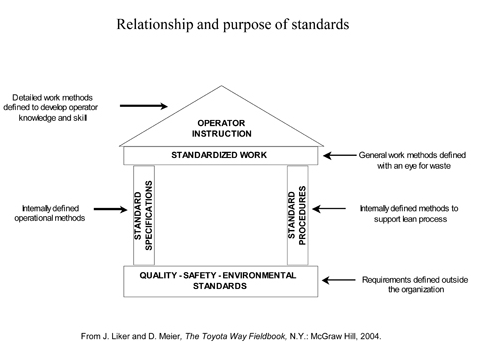One of the nice things of this time of year the meeting
workload drops, providing the opportunity to do some much needed catch up of
reading. An article that sparked some interesting thoughts and is related to a
lot of the principles of work and activities. It is worth a read on Toyota’s
approach to management of standards around the fundamentals of operational
procedures.
As discussed at length this year there are a couple of
key approaches that will effect industrial operational design:
·
That design needs to move away from interfaces
to actually design around activities/ Work; these can be executed through any
interface hosted on any device.
·
The other trend is to move to manage /
planned work, a knowledge worker moves from a “fire fighting” mode to a 70+ %
planned work in a day, which increases safety, and consistent process execution
through operational process stands combined with significant cost reductions
due reductions in the planned time.
These two trends or approaches will grow in adoption in
2014/ 15 as it is the only practical way to deal with the changing dynamic
nature of the workplace and rotating workforce.
The structure outlined below by Jim Laker used at Toyota
is a good basis for the how to lay out standards in procedures vs the actual
operation instruction. But another key cornerstone of this is knowledge management,
with 10000 baby boomers retiring a week in the US, and this rate is expected to
sustain for the next 17 years, the requirement for skill vs the talent pool
will be offset. So the operational systems must incorporate shared knowledge,
crowd sourced and managed to maintain the value. Many of the operational procedures
and best practices must be captured over the next 5 years, companies must put a
maintainable knowledge management system, and culture in place, and as you can
see in this diagram that standard procedures, operational safety and
environment procedures, and practices form the basis for the transition to
planned work, and activity based systems.
When you think of standards you think of “handcuffs” on
design and therefore innovation, but this is not a logical thought process. How
do you enable operational innovation which is based on operational best
practices, provides the foundational platform on consistent execution to enable
innovation and movement forward. The need to capture operational innovation by
taking the best operators and knowledge workers based on years of practices, capture
their operational practices within a system so that new less experienced users
to adopt the proven practice. Is this a one off NO, this is the continuous
process of improvement which will provide the edge for companies to agile.
As you sit down for the Christmas pudding and we look
forward to 2014, there is much opportunity and change ahead of us, and these
articles provide solid food for thought.
Have a great festive season, and see you in the new year.

No comments:
Post a Comment